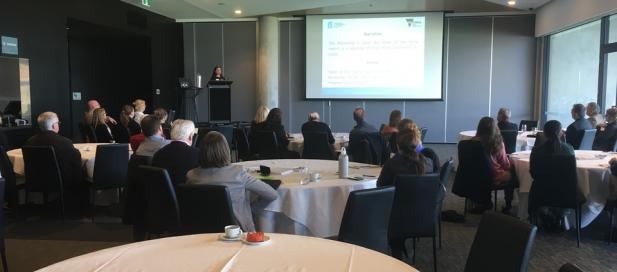
The Yarra River is an iconic high-profile natural flowing system within Victoria. With anything that receives much attention, think Great Barrier Reef or the Amazon Forest, socio-political interests are a factor. With this in mind, how do I work with a range of Yarra River partners and agencies in developing and writing an independent and impartial State of the Yarra and its Parklands (SotY) report?
It is a privilege to have the opportunity to speak at today’s 2018 Victorian Catchments Summit and as the lead science writer for the report, share my approach to developing the vision, narrative and content for Victoria’s inaugural SotY report due to be completed by December 2018. This year’s Catchment Summit theme is, ‘Strengthening Catchment Partnerships’, with a focus on how we can work with a range of catchment partners to improve delivery and demonstration of state and regional priorities in integrated catchment management.
In developing the vision and narrative for the SotY report, I took direct inspiration from the wording of the Yarra River Protection (Wilip-gin Birrarung murron) Act 2017 and the definition of Integrated Catchment Management.
This approach provided a story – a description of the Yarra as an alive and integrated entity as its flows on its journey from catchment to coast.
The above narrative not only aligns the SotY report with the Yarra River Protection Act 2017, but also to a number of national and international legislatures that provide legal personhood to specific rivers, for example, New Zealand’s’ Te Awa Tupua (Whanganui River Claims Settlement) Act 2017. By including cultural and social significance of the Yarra River to the Victorian Traditional Owners, the Wurundjeri Tribe Council, and the various communities who live alongside and connect to the river, this narrative goes well beyond capturing the bio-physical elements of the waterway and adjacent parklands.
The 2018 SotY report will deliver this cultural and social narrative by dedicating its first chapter to ‘Communities of the Yarra’. This chapter explores how diverse communities value, use and connect with the Yarra and its Parklands and their aspirations for keeping the Yarra alive. It will explore topics including: Cultural Landscape Health and Management, Stewardship and Recreational Health and Economic Values. This will be followed by a chapter dedicated to ‘Environmental Health’ which aims to understand the environmental condition of the river itself and associated parklands.
Developing content for the above chapters will be done by applying Victoria’s Commissioner for Environmental Sustainability, State and Benefit Framework. This Framework describes a methodology to facilitate co-design and collaboration in the approach of the Office of the Commissioner with government and non-government partners to improve the quality and ultimately impact on policy and practice of the reports produced by the Office. The 2018 SotY report, like Victoria’s first ever State of the Bays report issued by the Commissioner in 2016, will provide a scientific baseline to guide future monitoring, management and reporting. These reports are a synthesis of what we know, shine a light on what we don’t know and help us determine what we need to know to ensure the long-term health of these environmental assets. The 2018 SotY report will ultimately be the baseline against which future reporting will compare to determine whether the planning and management interventions have been effective in meeting the objectives of the Yarra River Protection Act 2017.
